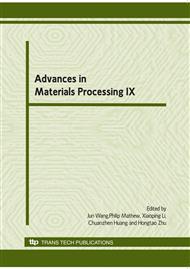p.516
p.522
p.528
p.537
p.543
p.551
p.557
p.562
p.567
Optimal Parameter Design of Solder Residue in Flip Chip Process by Using Taguchi Method
Abstract:
Because the solder residue was found in the manufacturing process which greatly affected the product quality, the purpose of this paper was to make the product quality improved and to find an optimal solution for process parameters in the flip chip process. The experimental testing was based on SMT manufacturing process. The amount and size of solder left on passive component in the process of manufacturing were considered as the quality traits. Since too many solders left on the passive component side during flux cleaning process, it was possible that the balling would be flowed into the chip, which caused the bump short in the chip and affected the quality of the product. In this paper, orthogonal array by using Taguchi method is adopted as the effective experimental method with the least experimental runs. Also, based on the quality evaluation of signal-to-noise ratio, the ANOVA is used to evaluate the effects of quality target according to the experimental results. The results reveal that the optimization in the process is confirmed. Therefore, this study can effectively improve the solder residue in semiconductor manufacturing process.
Info:
Periodical:
Pages:
543-548
Citation:
Online since:
June 2010
Authors:
Keywords:
Price:
Сopyright:
© 2010 Trans Tech Publications Ltd. All Rights Reserved
Share:
Citation:


